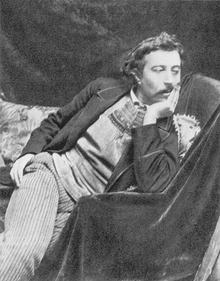Gauguin is in love with the “savage”. He wishes to return to the original purity. ” I am going to Tahiti and I hope to end my existence there. I judge that my art that you love is only a germ and I hope to cultivate it there for myself in a state of primitive and wildness”.
Gauguin chooses to turn to the art of sculpture, because it is this technique that allows him to return to this search for a primitive golden age. The artist yearns to find himself in harmony with himself in contact with the indigenous people who he then imagines are not perverted by civilisation: “I am going out to be quiet, to get rid of the influence of civilisation. I just want to make simple art; for that, I need to dive back into virgin nature, to see only savages, to live their lives without any other concern than to reproduce, as a child would do, the conceptions of my brain with the aid only of primitive means of art.
It is this Harmony of purity and simplicity that makes thisthat makes this “masque de femme” a timeless jewel and at the same timeand at the same time full of the primitive experience typical of theof the century.
This bronze sculpture entitled by Paul Gauguin as “masque de femme” is an original print by the artist in partnership with his dealer Maurice Malingue. Paul Gauguin made a few masks in Polynesia, some of which we have gathered in our research drawings from collections that allow us to create a link between the sculpture and the masks, unique local pieces.”
“Gauguin sculpted four masks, life-size portraits of Polynesians. One of them, a Tahitian head, was bought by Auguste Goupil, a notary and farmer in Tahiti, friend and sponsor of the artist. Segalen, following in Gauguin’s footsteps, met Goupil on several occasions, asked him his permission to photograph his mask and produced, from the photograph brought back to Paris, a faithful drawing, vigorously modeled with shadows marked by fine hatching, which is today a testimony to a lost work by Gauguin. The mask was actually in a French collection during World War II and was destroyed by fire. On March 26, 1905, Segalen sent a photograph of the sculpture from Brest to Georges-Daniel de Monfreid, but kept his drawing in the memory of the admired mask” (note No. 37 in the Victor Segalen exhibition catalog, Bibliothèque Nationale de France, 1999, p. 48, reproduction of the full-page drawing).
“This charcoal drawing is also part of the set of portraits of Tahitians that Gauguin may have placed among the “documents” that he collected in Tahiti before he felt able to start painting seriously. Obviously, it is a portrait of the artist’s favorite model, Teha’amana. Gauguin did not draw the pupils of the eyes in any of these portraits, which gives the young girl’s face the appearance of a mask.”
Paul

Paul Gauguin (1848-1903) was a revolutionary French artist known for his distinctive and innovative approach to art. Born in Paris, his journey led him to explore new realms of color, form, and symbolism, ultimately shaping the course of modern art. From his pioneering use of color to his immersive experiences in Tahiti and the Marquesas Islands, Gauguin's legacy remains an enduring source of inspiration for artists seeking to break free from conventions and embrace the realm of the imagination.



